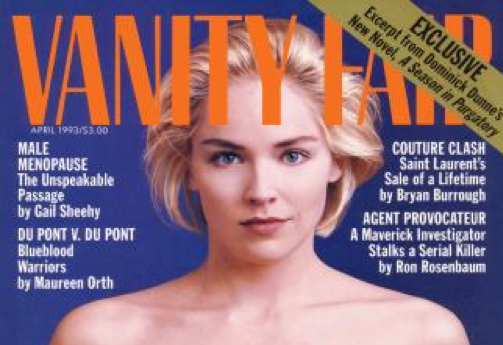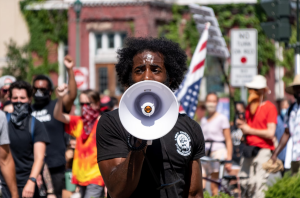The Future of Men’s Mental Health

Part 5 —Male Menopause: Speaking Out About the Unspeakable Passage
This is the 5th in a series of articles on the Future of Men’s Mental Health. In Part 1, I addressed the questions, “Men and Mental Health, What Are We Missing?” Part 2 focused on the way that “Mental Health Crises Are Putting Everyone at Risk.” In Part 3, I explored Gender-Specific Healing and Man Therapy. In Part 4, I shared Recent Research From Leading Neuroscientists.
The title of the first chapter of my book, Male Menopause, was titled, “Putting the Men Back in Menopause.” I detailed my initial explorations this way:
“When I began researching this book, I was skeptical about the concept of ‘male menopause.’ I had been a therapist for over thirty years and had worked with thousands of midlife men and women. Is there really a change of life that men go through?”
I went on to describe my encounter with one of the earliest proponents of male menopause, the writer Gail Sheehy.
“While browsing through my local bookstore, I was drawn to a copy of Vanity Fair magazine. Well, to be absolutely honest, I was drawn to the cover photo of Sharon Stone, nude to the waist, with her hands cupping, but only partially covering, her breasts. Sharon was staring seductively into the eyes of the reader, with two-inch letters emblazoned across her bare midriff proclaiming, ‘WILD THING!’ I was sure there was something important Sharon had to tell me.”
I went on to say,
“However, I never read the article to find out, because just to the left of Sharon’s blond hair, right below the April 1993 dateline, were the words that grabbed me by the throat (actually a bit farther south than my throat)—‘Male Menopause: The Unspeakable Passage by Gail Sheehy.’ Those words spoke in a quiet but insistent voice.”
Male Menopause was published in 1997 and soon became an international best-seller. It has since been translated into more than fifteen foreign languages. My follow up book, Surviving Male Menopause: A Guide for Women and Men, was published in 2000. There continues to be a great deal of confusion and controversy surrounding the whole concept of what goes on at mid-life for men. As Sheehy recognized in the 1993 article,
“If menopause is the silent passage, ‘male menopause’ is the unspeakable passage. It is fraught with secrecy, shame, and denial. It is much more fundamental than the ending of the fertile period of a woman’s life, because it strikes at the core of what it is to be a man.”
I was one of the early researchers who was speaking out about Male Menopause (also called Andropause or Manopause). Here are a few of the important things I’ve learned over the years and have shared in my books and articles.
What is Male Menopause?
Male Menopause begins with hormonal, physiological, and chemical changes that occur in all men generally between the ages of forty and fifty-five, though it can occur as early as thirty-five or as late as sixty-five. These changes affect all aspects of a man’s life. Male Menopause is, thus, a physical condition with psychological, interpersonal, social, and spiritual dimensions.
What is The Purpose of Male Menopause?
“The purpose of Male Menopause is to signal the end of the first part of a man’s life and prepare him for the second half. Male Menopause is not the beginning of the end, as many fear, but the end of the beginning. It is the passage to the most passionate, powerful, productive, and purposeful time of a man’s life.”
What Are The Most Common Symptoms of Male Menopause?
- Loss of libido and sexual desire, particularly with the partner you are with.
- Increased fantasy about having sex with others.
- Difficulty developing and maintaining erections.
- Increased irritability and anger.
- Taking longer to recover from injuries and illness.
- Having less endurance for physical activity.
- Increased anxiety and worry.
- Loss of self-confidence and joy.
What Are Common Life Changes Associated with Male Menopause?
- Hormone levels are dropping, particularly testosterone.
- Sexual vigor is diminishing.
- Children are leaving.
- Parents are dying.
- Job horizons are narrowing.
- Friends are dying or getting serious illnesses.
- Martha Weinman Lear, writing in the New York Times Magazine summed it up this way.
“The past floods by in a fog of hopes unrealized, opportunities not grasped, women not bedded, potentials not fulfilled, and the future is a confrontation with one’s own mortality.”
Over the years, I have found two common extreme views: (1) Male Menopause doesn’t exist. Only women go through a hormonally driven change of life. (2) If men do go through a change, it is only a hormonal change, and can be “cured” by giving men supplemental testosterone.
I’ve learned that neither of these views are true. Men do experience a change of life, whether we call it Male Menopause, Andropause, or Manopause. I called it Male Menopause because I believe there are more similarities than differences between what women and men experience. I also believe, as does, Gail Sheehy, that it is much more complex than simply a loss of hormones and
“It is much more fundamental than the ending of the fertile period of a woman’s life, because it strikes at the core of what it is to be a man.”
Surviving Male Menopause Together. How Can Couples Navigate the Change of Life?
After Male Menopause was published and become an international best-seller with 15 foreign editions, I received letters from women all over the world asking questions about the relational aspects of what men go through. I wrote the book Surviving Male Menopause: A Guide for Women and Men to answer questions including the following:
- How does male menopause differ from the midlife crisis?
- Why do men have affairs at this time of life?
- What are the best methods for treating erectile dysfunction?
- Why do menopausal men act so much like adolescent boys?
- What can a woman do to help a man get through male menopause?
Is There Anything Good About Male Menopause?
Like so many complex aspects of life, when we try to oversimplify things, we lose the very essence of what we are trying to study. When we deny the reality of a “male change of life” and reduce it to a “midlife crisis” or simply see the change in medical terms, we give men few options.
For most of human existence our lifespan was quite limited to around forty years. Men and women rarely lived long enough to experience a “change of life.” Life was a climb up a mountain and we reached the peak when we were in our 20s and had produced children to keep our species going. Then, it was a quick decline down the mountain once the children were old enough to survive.
But now humans can live into our 80s, 90s, and beyond. Now there is another mountain to climb and what we call Male Menopause is simply the transition to the second mountain. If top of the first mountain is called “Adulthood,” the peak of the second mountain, is “Super-Adulthood” or “Elderhood.” That is why I say that
“Male Menopause is not the beginning of the end, as many fear, but the end of the beginning.”
Too Many Men Are Dying Before Their Time
These are confusing and challenging times for most people, but particularly for men. It has been said that “Old age is not for sissies.” While many men are embracing the later years, too many are losing hope and giving up. The suicide rate for men is much higher than the rate for women and gets even worse the older we get.
Take a look at this chart from the Centers for Disease Control (CDC):
Suicide rate among adults age 55 and older, by age group and sex: United States, 2021

We see the men’s death rates on the left and women’s on the right for four different age groups. It is clear that death by suicide is a huge problem for men as we age. The male/female ratio for ages between 55 and 85+ are almost 5 times higher for males. This is a tragedy and a crisis. Clearly older men are feeling pressures that women do not experience and are losing hope for a better future. This needs to change.
Welcome to the Second Mountain and an Expanded Understanding of Midlife and Aging
My friend and colleague, Chip Conley, is transforming our understanding of midlife and what we can look forward to as we prepare for and climb the second mountain of life. Says Conley, “The midlife crisis is the butt of many jokes, but this long-derided life stage has an upside.” In his new book, Learning to Love Midlife: 12 Reasons Why Life Gets Better with Age, he expands our vision.
“What if we could reframe our thinking about the natural transition of midlife not as a crisis, but as a chrysalis: a time when something profound awakens in us, as we shed our skin, spread our wings, and pollinate the world with our wisdom?“
We know midlife and aging is not all sweetness and light. It isn’t easy letting go of old ways that no longer work for us. We all know what happens to the caterpillar. As Conley reminds us,
“When it is fully grown, it uses a button of silk to fasten its body to a twig and then forms a chrysalis. Within this protective chrysalis, the transformational magic of metamorphosis occurs. While it’s a bit dark, gooey, and solitary, it’s a transition, not a crisis. And, of course, on the other side is a beautiful, winged butterfly.”
You can learn more about Chip’s work and his book on his website, https://chipconley.com/
Learning About Men’s Health, Male Menopause, and How to Live Well in the Second Half of Life
There is a lot we need to learn about life in the second half. Chip Conley suggest that there are three stages of midlife:
- Early midlife (Age 35-50)
During early midlife we tend to experience some of the challenging physical and emotional transitions—a bit like an adult puberty. We realize we are no longer young, but not yet old.
- The second stage of midlife (50-59)
This is the core of midlife in our fifties when we’ve settled into this new era and are seeing some of the upside. We begin to see opportunities for growth and finding passions we never knew we had.
We are still young enough to see and plan for what’s next, our senior years. Says Chip,
“At 63, I am just getting acquainted with this third stage, but I do know it’s also when our body reminds us it doesn’t want to be forgotten.”
I turned 80 last December and am well into the stage of Eldership. It’s a time where we are called to share what we know and have learned over our lifespan. Three years ago I started the MenAlive Academy for Gender-Specific Healthcare. The Academy offer programs for both men and women who want to learn about the unique mental, emotional, and relational issues that men face. It also offers programs for healthcare providers who are working with men and their families.
As my colleague Marianne J. Legato, M.D., Founder of the Foundation for Gender-Specific Medicine says,
“Everywhere we look, the two sexes are startingly and unexpectedly different not only in their normal function but in the ways they experience illness.”
If you would like more information about the MenAlive Academy for Gender-Specific Healthcare, drop me a note to Jed@MenAlive.com and put “MenAlive Academy” in the subject line. If you’d like to read more articles like these, I invite you to subscribe to our free weekly newsletter.







